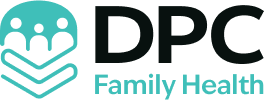Is direct primary care just a benefit reserved for the rich? Many still misinterpret this healthcare model as an elusive option or view it as a risky alternative to traditional insurance. The article challenges these myths by presenting clear evidence on flexible membership plans, transparent pricing, and improved provider access. It articulates how direct primary care offers a cost-effective, patient-centered solution that supports routine and proactive care for diverse income levels. Readers will find factual comparisons and real-world examples to question outdated beliefs about this accessible healthcare model.
Myth 1: DPC Replaces Health Insurance
Direct primary care does not dictate an abandonment of health insurance. Traditional insurance comes with hidden expenses such as deductibles that may reach $1,500 on less expensive options and climb to $3,000 for plans with higher deductibles. In contrast, direct primary care practices adopt transparent membership models with predictable fees, ensuring that patients receive routine, preventive, and chronic care without the burden of unexpected costs. This alternative model prioritizes proactive services and personalized attention, aimed at managing everyday health needs, while insurance remains a useful safeguard for rare catastrophic events.
For example, patients can maintain a direct primary care membership to cover regular check-ups and consultations while keeping minimal insurance coverage for emergencies. This strategy helps avoid the complexities and unexpected financial drawbacks of traditional plans. Factual data indicates longer appointments and accessible visits within direct primary care, underscoring its commitment to patient-centered healthcare. The clear separation of routine and emergency care demonstrates that switching to direct primary care does not mandate completely forgoing insurance but rather complements it by streamlining everyday care expenses and improving overall healthcare efficiency.
Myth 2: DPC Is Only for Healthy People

Direct primary care challenges the notion that it is reserved solely for individuals who already appear healthy. Even when patients feel well or are young, subtle indicators like high cholesterol or elevated blood pressure can be overlooked without proactive monitoring. Regular, comprehensive check-ups are fundamental in uncovering hidden issues before they develop into serious conditions. This approach emphasizes the importance of early interventions that support long-term health for all patients.
Direct primary care practitioners dedicate extended consultation time to routine assessments. This method allows for a careful review of each patient’s health history and lifestyle, which is critical for identifying potential problems early. Instead of assuming that feeling healthy means no medical attention is needed, these practices prioritize continual monitoring and personalized guidance. The benefits of this proactive care approach include:
- Early detection
- Regular monitoring
- Personalized health planning
- Chronic condition management
Proactive Care Advantages
Extended appointments in direct primary care enable physicians to notice subtle changes that might otherwise go unnoticed. Personalized care plans, developed during these in-depth consultations, help patients address potential risks before they escalate. This proactive process supports sustained wellness by promoting regular monitoring and timely interventions. DPC practices, therefore, serve not only patients with chronic conditions but also those who seem healthy, ensuring that every individual receives attentive, preventative care.
Final Words
in the action, the article reviewed diverse myths about Direct Primary Care.
It addressed concerns over cost, insurance use, specialist access, suitability for healthy patients, and availability during urgent times.
The discussion on 5 Myths About Direct Primary Care Debunked illustrates transparent pricing, flexible membership, and responsive care models.
Facts compared traditional practices with DPC, offering attributes such as shorter wait times and extended appointment durations.
The insights empower a proactive approach to healthcare and instill confidence in choosing a model that meets evolving needs.
FAQ
Q: What are the main disadvantages of Direct Primary Care (DPC)?
A: Direct Primary Care requires separate catastrophic insurance coverage for major medical events and may have geographic limitations based on provider availability. Monthly membership fees continue regardless of service utilization.
Q: Is Direct Primary Care cost-effective with existing insurance?
A: Direct Primary Care can be cost-effective alongside high-deductible insurance plans. The monthly DPC fee provides comprehensive primary care services while insurance covers major medical events.
Q: What makes Direct Primary Care different from traditional practices?
A: Direct Primary Care eliminates wait times, provides hour-long appointments, and offers direct communication with physicians. Monthly fees cover all primary care services without additional costs.
Q: How does Direct Primary Care handle specialist referrals?
A: Direct Primary Care practices maintain established networks with specialists and coordinate referrals directly. Physicians advocate for patients and facilitate seamless specialist appointments when needed.
Q: Who benefits most from Direct Primary Care services?
A: Direct Primary Care benefits both healthy individuals seeking preventive care and those managing chronic conditions. The model supports early detection, regular monitoring, and comprehensive health management.
Q: What services are included in Direct Primary Care memberships?
A: Direct Primary Care memberships typically cover all primary care visits, preventive services, basic procedures, and direct physician communication through phone, email, or text messaging.

